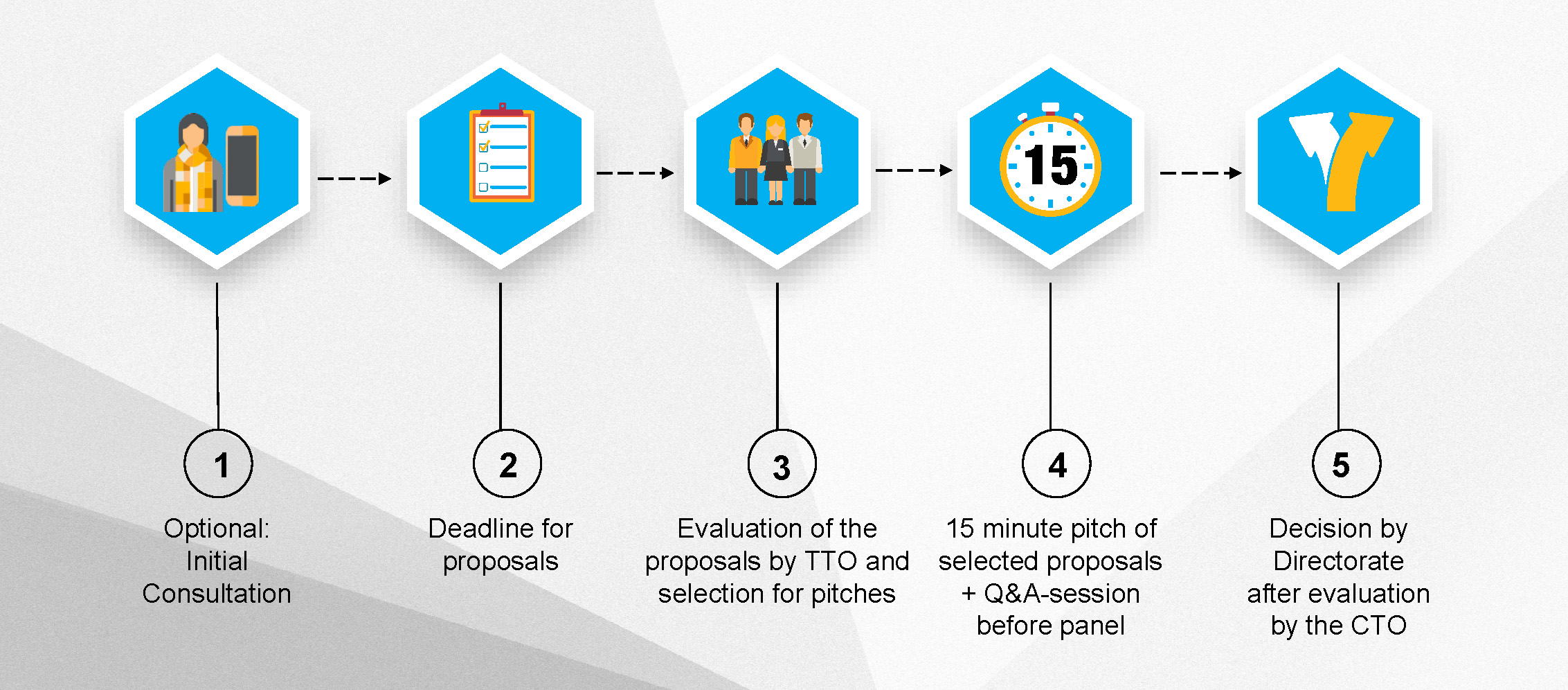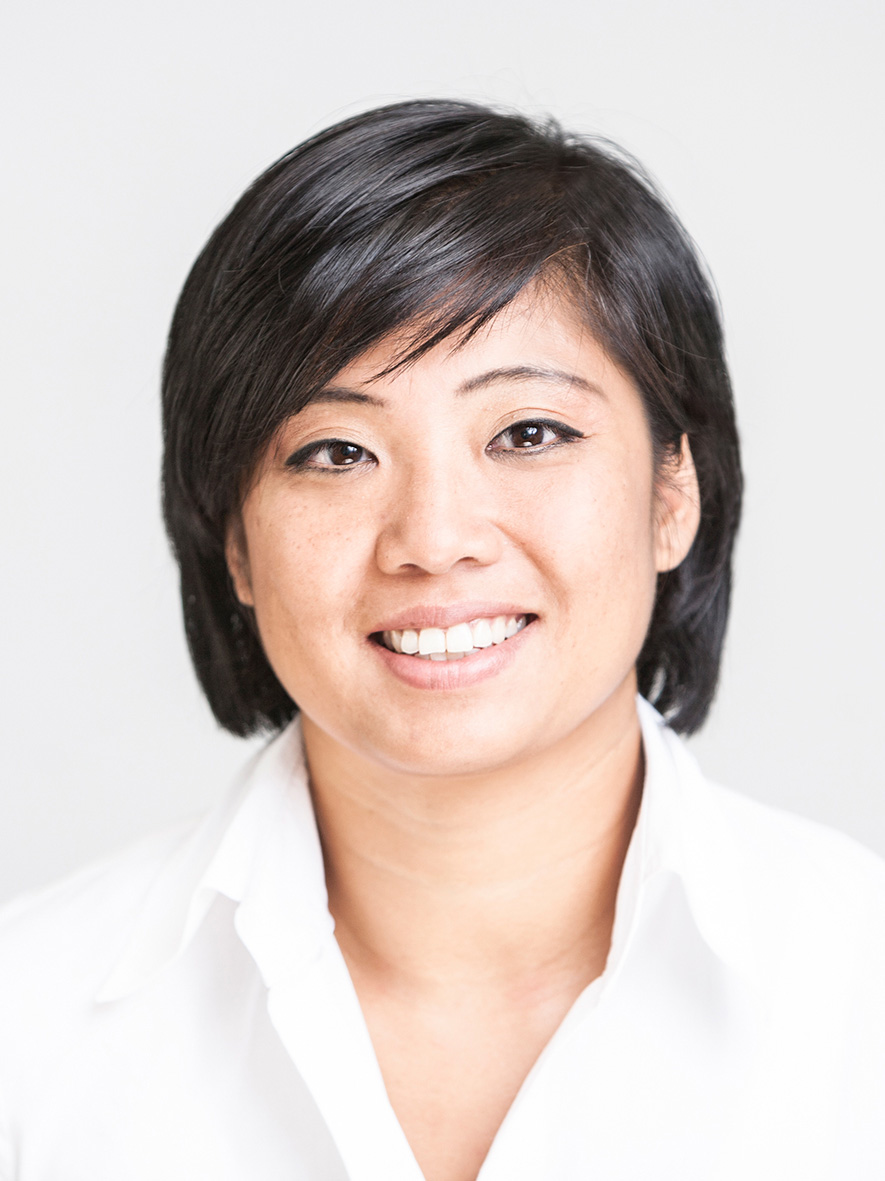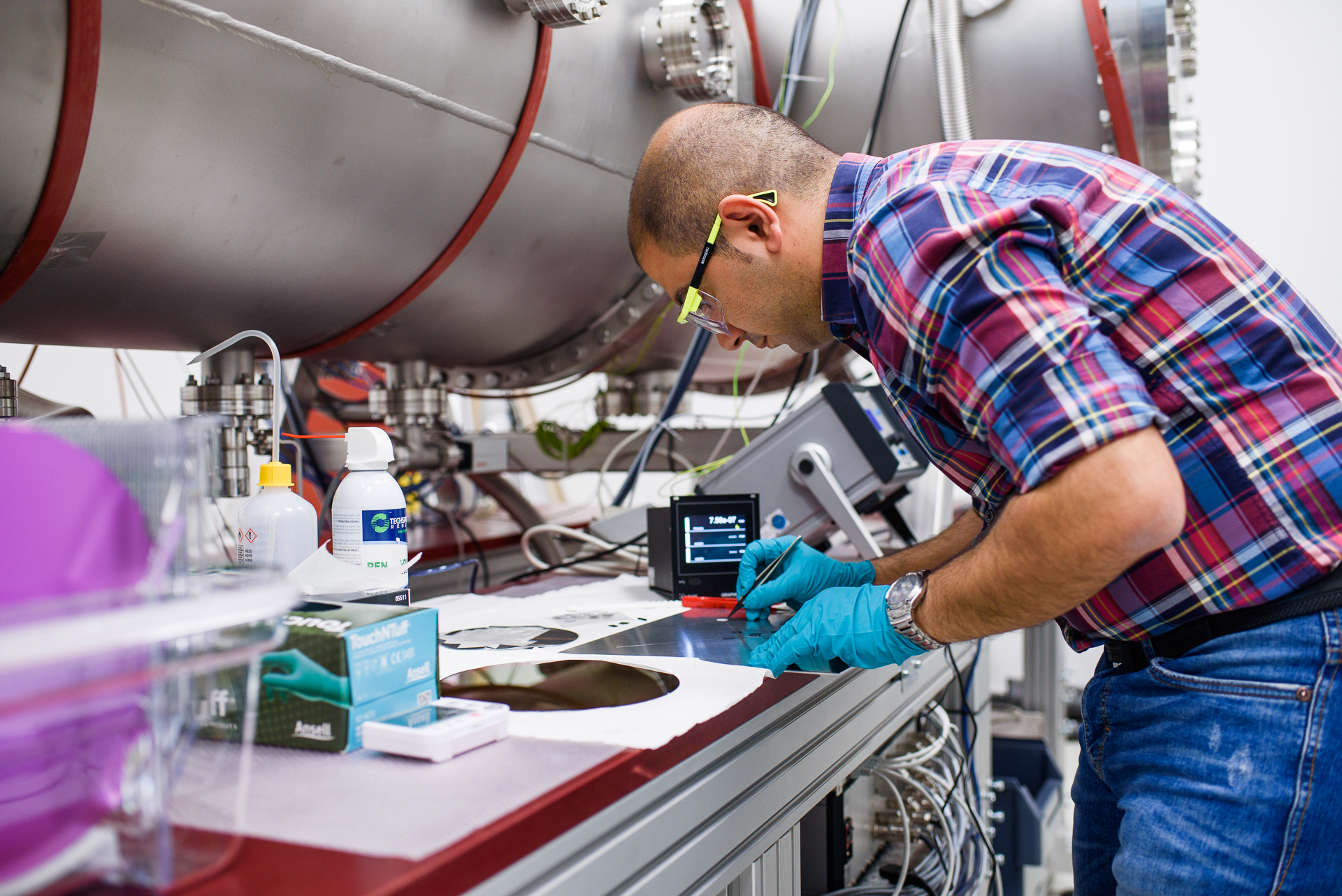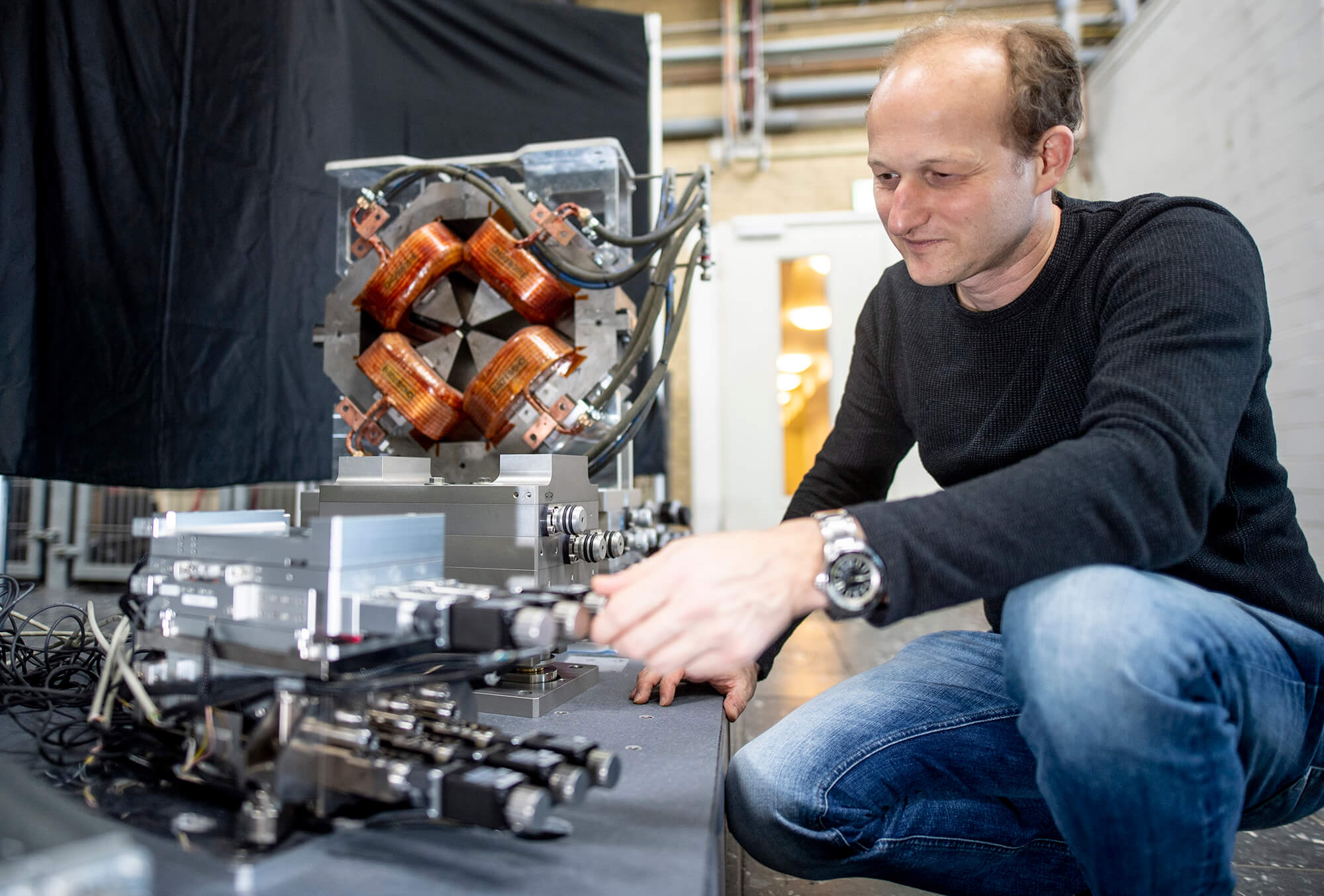DESY Generator Program
The DESY Generator Program (DGP for short) has a very clear goal: to bring technologies, ideas, products or processes with a potential for industrial exploitation one step further towards market maturity.

Bringing ideas and products towards market maturity
The DGP offers tailored funding for projects that are still in the early stages of an innovation process. The program serves to make researchers and research results fit for transfer. Ideas and technologies are to be developed further so that, for example, prototypes can be realized or these can be developed to such an extent that it makes sense to apply for further funding opportunities outside DESY.
For example, the funds from the DGP can be used for this purpose:
• Develop prototypes,
• understand markets,
• Identify requirements of potential customers,
• Identify or deepen industry collaborations,
• Attract Helmholtz or other funding to increase ARL (Application Readiness Level).

Main Criteria for Funding
The DGP is intended to fill a gap in funding for new technology developments that exists between DESY's core basic research and applied, innovation-focused research. DGP funding focuses on developments that have exploitation potential. Here, exploitation potential is understood to mean that there are real opportunities, e.g., to find a licensing partner in industry, to enter into cooperative development agreements with industrial companies, up to and including the spin-off of a new company from the research enterprise.
With the 2025 call, the DGP will be expanded through the link to the PETRA IV transformation project. This provides additional funding for projects with PIV-related technologies and methods with exploitation potential.
Who can submit an application and how?
All DESY employees can submit a DGP application. For the application, please use the DPG application form, which can be requested from Lan Fimmen (Tel. - 1748, e-mail: lan.fimmen@desy.de).
Application deadline
The next call for applications will take place in spring 2026. If you have any questions, please contact ITT (Lan Fimmen: lan.fimmen@desy.de).
Funding period
The DGP is a program to promote new innovative developments and is to be limited to two years. The funding must be drawn down between July 2025 and Dec 2027. Latest start of an approved project January 2026.
Examples of previous DGP projects
Magnetosensors are tiny, highly sensitive and efficient components that surround us everywhere in our daily lives. They play an important role in the automobile industry and can be found in mobile phones and computers. The lab of Ralf Röhlsberger at DESY has developed a technology to produce novel custom made magnetosensors. The development of these sensors for applications of industrial collaboration partners has been recently funded by the Helmholtz Validation Fund.
The aim of the DGP-funded project is perform further R&D work to optimise the manufacturing process of the sensors. Such a process would open up new possibilities for the commercialisation of magnetosensors like a service for the production of sensors for a broad range of applications.
Time period: September 2018 – August 2020
In a collaboration between the DESY groups MSK (Machine Beam Controls) and FS (Photon Science), a new universal motion controller was developed in the MicroTCA.4 standard. This can control many hundreds of distributed motors, move them synchronously and communicate with other controllers on campus.
The aim is to operate all the motors of a beamline in parallel and simultaneously acquire data from different detectors of an experiment. Compared to current solutions, the new motion controller is more compact, more cost-effective, can be combined with other modern components from the MicroTCA standard and also supports established motor drivers so that they can continue to be used.
Time period: November 2019 - October 2021
The EASy is a series of positioning systems patented by DESY that can control their target via up to six axes that are largely decoupled from each other. The systems have a modular design in order to provide individual, customer-specific solutions in a short time and with little effort.
The aim of the DGP project is to further develop the patented EASy series and to transfer it from research to industry. In particular, the prototype EASy A3 is being developed in the DGP project. This ultra-compact 6-axis positioning system (EASy A3) sets standards in terms of load-bearing capacity, precision, modularity and cost-effectiveness. Due to these combined features, the EASy series is an excellent complement to previously existing concepts for alignment units.
DESY and positioning specialist Steinmeyer Mechatronik GmbH jointly conduct a market study.
Time period: February 2020 - January 2022
The charge-collection efficiency in electronic devices such as solar cells is a critical parameter pertaining to the device performance. X-ray beam induced current (XBIC) measurements enable the spatially resolved analysis of the electrical characteristics such as the charge-collection efficiency concurrently to the assessment of structural and compositional defects through X-ray diffraction and X-ray fluorescence using scanning X-ray microscopy. Beyond mapping the performance in 2D with unparalleled spatial resolution and sensitivity, we have demonstrated the feasibility of tomographic XBIC reconstruction into 3D charge collection efficiency which is decisive for the design of functional materials and electronic devices.
Within this DGP project, we seek to commercialize the DESY technology of 3D performance measurements. An industry-friendly XBIC tomography routine is developed by adapting a laboratory X-ray microscope and implementing the tomographic reconstruction into a robust and user-friendly software.
Time period: January 2021 - December 2022
FAQ
Yes. The submission deadline this year was 13 May 2025.The next call for applications will take place in spring 2026. This is a seed funding aiming to finance working towards a proof of concept or a realization of a first prototype. The amount is about 120 - 150 k€ over two years. Yes, funding must be drawn down within the requested period. The projects can call up the approved funding in the period from July 2025 to Dec 2027. Latest start of an approved project: January 2026. Yes. Everybody can apply as long as the project results contain intellectual property (IP) by DESY. Yes. The main criteria for a decision, whether a project can be supported depends on the potential for industrial application. Yes. Software is often the essential part to make industrial applications possible. The difference: The DSF seeks to support excellent and risky scientific approaches and questions. The DGP on the other hand supports research projects, with a high market potential and can drive innovations for industry and society in a more immediate future. That depends. Ideally, the invention and technology behind it has come such a long way, that an application for external funding is possible.Is there a deadline for submitting applications?
How much money can be granted for each project? Is there a maximum amount?
Do the funds have to be drawn down within the requested period or can I apply for a cost-neutral extension of the project?
We are an interdisciplinary team from more than one lab? Can we still apply?
My invention is not in one of the technology fileds listed above. Can I still apply for funding?
I have a good idea, but it is not a technology, it is a software solution. Can this be covered in the DGP as well?
What exactly is the difference between the DESY Strategy Fund (DSF) and the DESY Generator Program (DGP)?
Ideas and research results are often not yet sufficiently developed to be of interest to industrial companies, in order to start a cooperation or a R&D project. In order to overcome this hurdle, the DESY Generator program can fund these projects in a very early stage. These projects, e.g. the construction of a prototype, are intended to increase the technology readiness level (TRL). Furthermore valuable exploitation strategies and launch marketing initiatives in cooperation with the ITT can be developed.
What happens after the funding by the DESY Generator Program?
But as the technologies and projects are very different, the next steps will be evaluated and chosen in close collaboration with ITT. The intention is to bring the idea, invention or development to market application, the ways how to achieve this might differ considerably.

Your contact to the DGP
Would you like to learn more about the DESY Generator Program? Lan Fimmen will be happy to help you!





